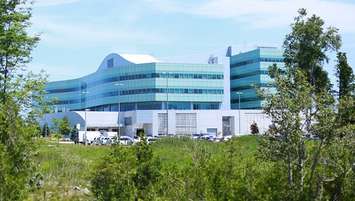Bruce Power has taken another significant step in securing Ontario’s energy future with the launch of the Unit 4 Major Component Replacement (MCR).
This latest phase in the company’s Life-Extension Program is expected to provide clean, reliable energy for businesses, hospitals, and residents for decades to come. The project also ensures a continued supply of cancer-fighting medical isotopes for the global healthcare industry.
The three-year Unit 4 outage marks the third MCR at Bruce Power, following the successful refurbishments of Units 6 and 3. The lessons learned from these projects, along with cutting-edge technology, are being applied to improve efficiency and performance in the current and future MCRs.
“Our Life-Extension Program and Major Component Replacement is more than a construction project,” said Eric Chassard, Bruce Power President and Chief Executive Officer. “By completing each of the MCR outages safely, on plan, and to a high-quality standard, we are securing the future of the Bruce site, sustaining our communities, and powering Ontario through a time when electricity demand is growing rapidly.”
Bruce Power’s $13-billion refurbishment is Canada’s third-largest infrastructure project, following British Columbia’s Peace River Site C hydroelectric project and Ontario’s GO Transit expansion. It is also Ontario’s largest clean-energy infrastructure project, entirely funded through private investment.
Meantime, the Unit 3 MCR, which began in March 2023, is progressing as scheduled, with the unit expected to return to service in 2026. Overlapping MCR outages will continue at the Bruce site until 2033, making it one of the most extensive nuclear refurbishment efforts ever undertaken worldwide.
“To execute a project of this scale and complexity, it takes an ecosystem of nuclear professionals working together toward a common goal,” said Laurent Seigle, Bruce Power’s Executive Vice-President, Projects. “We’re committed to returning these units to service safely and successfully to meet Ontario’s clean energy needs well into the future.”
Bruce Power has implemented innovative new tooling in the Unit 3 MCR, including the first-ever robotic tooling used on a reactor face anywhere in the world. These technological advancements have allowed tradespeople to improve safety, efficiency, and accuracy in the refurbishment process.
With the Ontario Independent Electricity System Operator (IESO) predicting a 75 per cent increase in electricity demand by 2050, Bruce Power’s ongoing refurbishments will play a crucial role in meeting the province’s growing energy needs.
“Under our contract with the IESO, subsequent MCRs are expected to improve on cost and schedule by building on lessons learned and experience,” said Rob Hoare, Vice-President, MCR Execution. “And we’re seeing that happen in real-time on this project. Evolutions that were recently completed on Unit 3 have been assessed and improved on for execution in Unit 4. It’s a testament to the world-class team we have and their commitment to continuous learning, proficiency, and excellence.”
Bruce Power currently produces 6,550 megawatts (MW) of peak clean energy, with output expected to exceed 7,000 MW in the 2030s once the MCR program and Life-Extension projects are completed. These refurbishments will extend the operational life of each reactor by 30 to 35 years, ensuring stable energy production while reducing greenhouse gas emissions.
The program and ongoing site operations create and sustain 22,000 direct and indirect jobs annually, injecting approximately $4 billion into Ontario’s economy each year. The economic benefits are particularly felt in Bruce, Grey, and Huron counties, known as the Clean Energy Frontier region.






